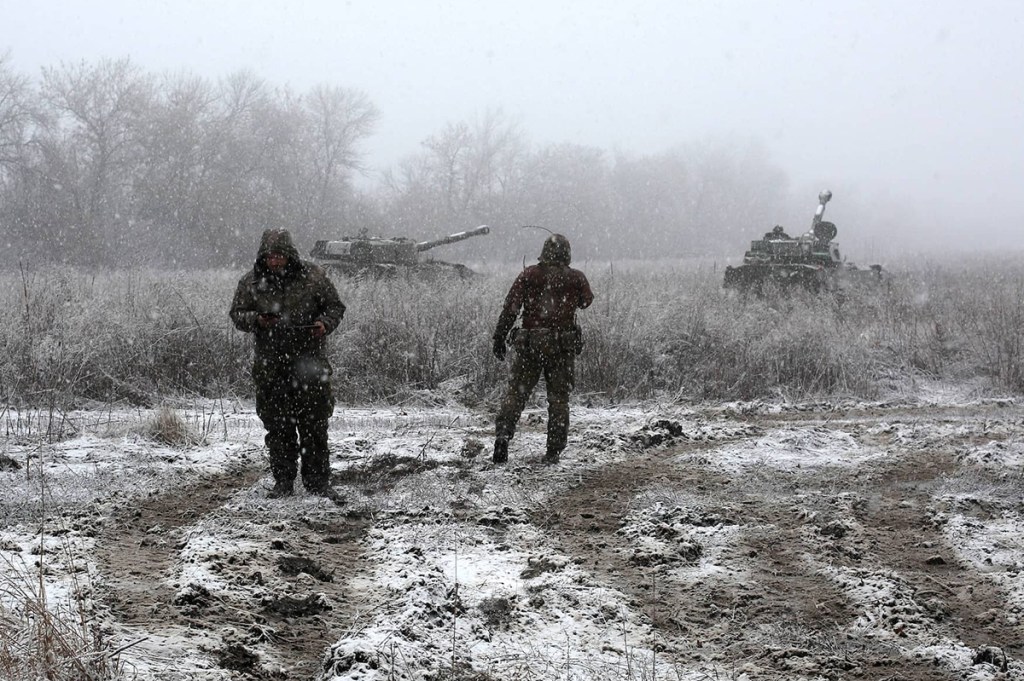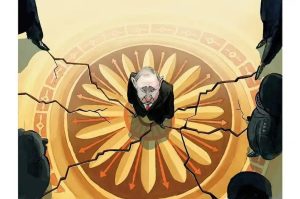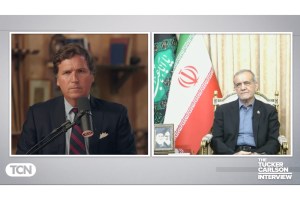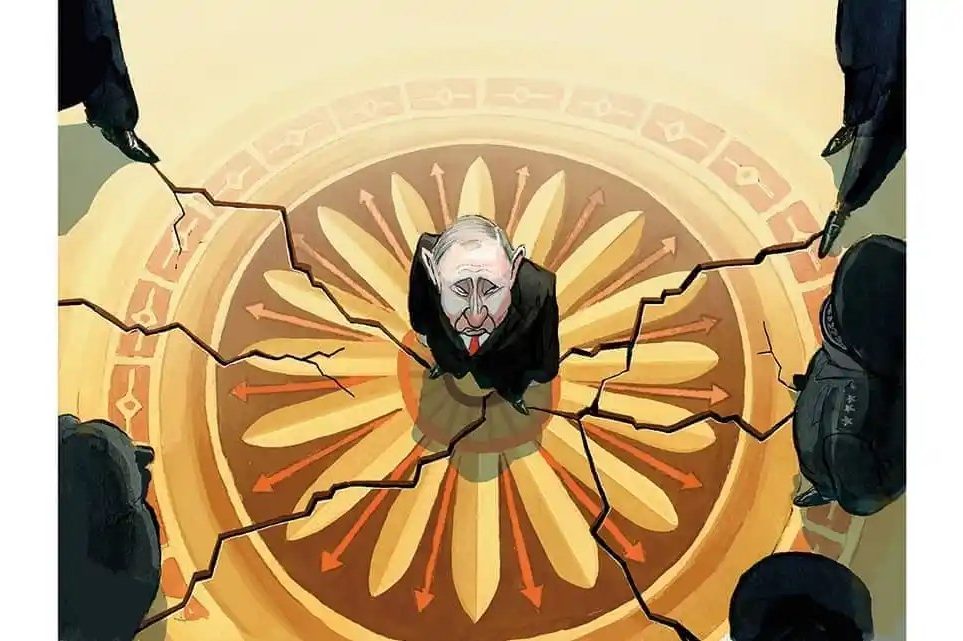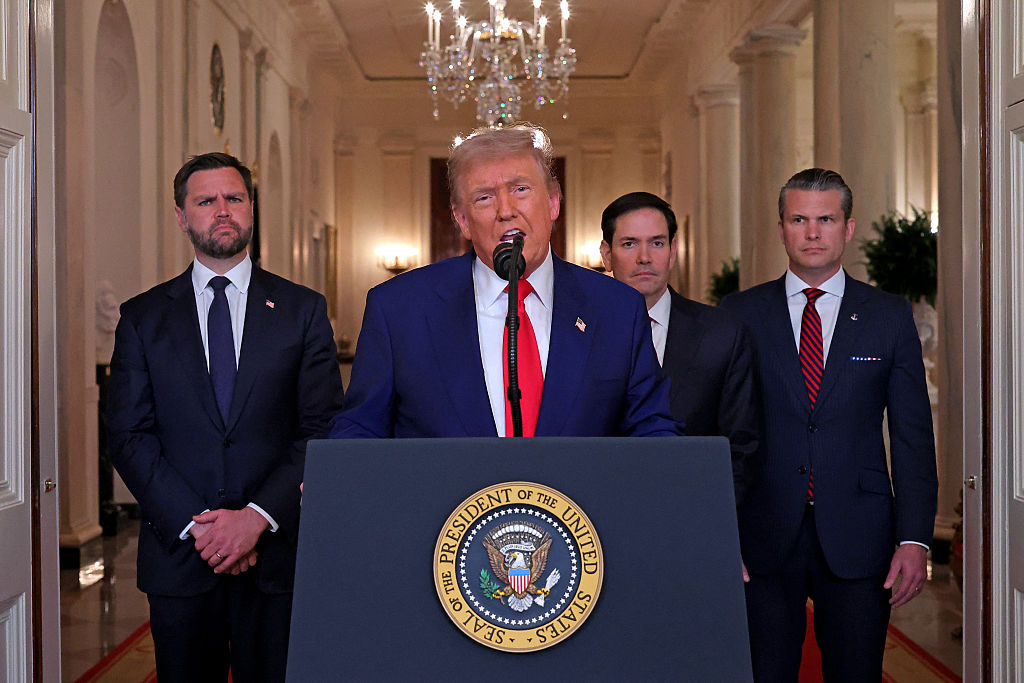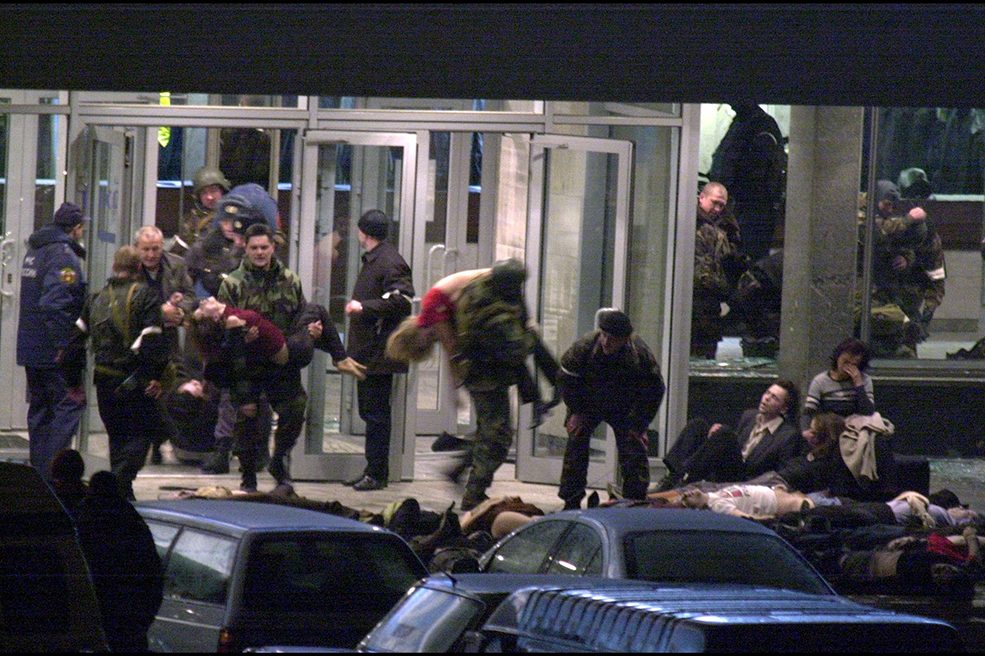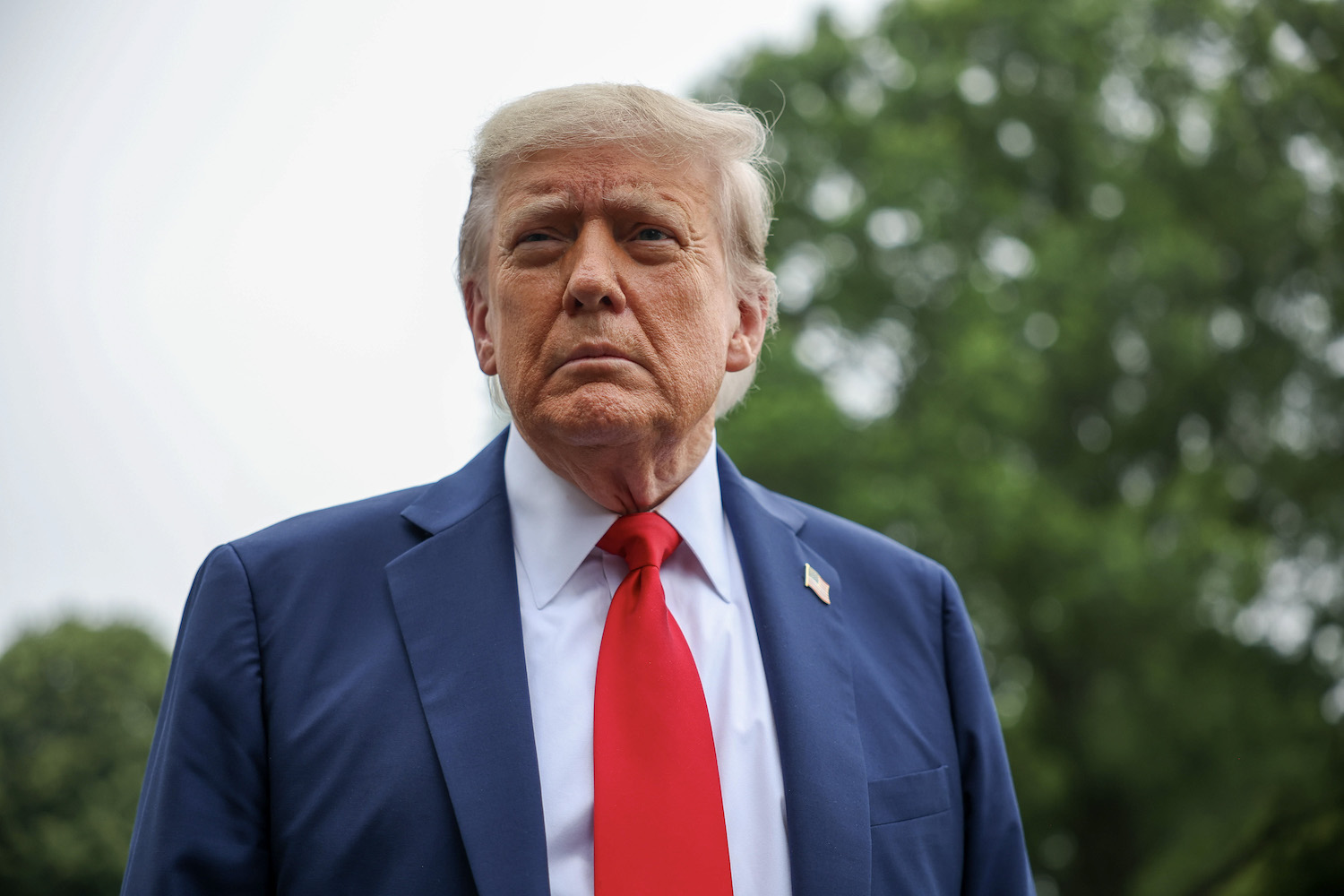The sheer complexity — and horror — of Russia’s war on Ukraine makes it difficult to distill the essential points. To take only one example, the battlefront north of Kyiv, where the Russian convoy is stalled, is significantly different from that along the Black Sea, where Russian forces from Crimea have made substantial progress. A third front, in the east, is consolidating in Russia’s favor, though the fight was much harder and longer than Moscow expected.
Amid this complexity, it is important to summarize what we know so far:
1.
Vladimir Putin’s decision to invade Ukraine appears to be the most catastrophic strategic mistake since the end of the Cold War and by far the most dangerous. Within a week, his invasion completely transformed Europe, militarily and diplomatically. It revitalized NATO, prompted Germany to reverse decades of concessionary policies toward Russia, and saw Berlin emerge as Europe’s leading voice in opposition to the Kremlin.
Germany didn’t just mouth high-sounding words. It cut off its highly-anticipated new source of energy, the nearly-completed Nord Stream 2 gas pipeline from Russia. And it overcame its long-standing reluctance to support military conflicts abroad by sending significant stores of munitions to Ukraine. The emergence of Berlin as a significant player in this fight is one of the most striking — and under-appreciated — outcomes so far.
2.
By invading, Putin has made a disastrously bad calculation about the likely military success and the diplomatic consequences of an unprovoked attack. His principal military errors were thinking his army and air force could easily overwhelm their smaller Ukrainian adversaries, capture their main strategic objective, Kyiv, within seventy-two hours, and face little popular resistance. They were wrong on all counts. (Putin was not alone in his forecast. US military analysts also expected Kyiv to fall quickly.)
Putin and his cadre seemed to have swallowed their own anti-Ukrainian propaganda, expecting to win easily and be welcomed by a local population eager to be rid of their “fascist rulers.” Instead, the Russian army faced ferocious fighting from determined, if outnumbered, Ukrainian forces and unanimous opposition from Europe and North America. Putin, like all dictators, never hears discordant views from his inner circle (who risk expulsion or worse) or from dissident news and opinion sites (which he has suppressed). Putin compounded his own information deficit by his self-isolation during Covid.
3.
The most important and unexpected outcome of the war so far has been the breadth and ferocity of Ukrainian opposition to Russia’s attack and the courageous leadership of Volodymyr Zelensky. His refusal to accept Joe Biden’s offer of safe transit from Ukraine, knowing he was the top name on Putin’s kill list, produced the most memorable quote of the war: “I don’t need a ride. I need more ammunition.” Zelensky’s response ranks with one of the most famous from the American revolution. In 1779, when British warships demanded Captain John Paul Jones surrender, he replied: “I have not yet begun to fight.” That’s exactly what Zelensky was saying.
Like all modern wars, the death and destruction are captured on cell phones and broadcast around the world, except for Russia, China, Iran and a few other dictatorships. In the West, however, those horrifying images are broadcast continuously. The predictable result is widespread revulsion at Putin’s actions and overwhelming support for Ukraine’s fight.
4.
The three most-compelling markers of that external support are the surge of weapons shipments from NATO members, the unprecedented economic boycott of Russia by dozens of countries and hundreds of private firms, and the warm welcome extended by citizens of neighboring countries to the 1.7 million Ukrainian women and children who have fled the country.
5.
Putin was mistaken in his judgment that ordinary Russians would share his revulsion at Ukraine’s government and even its independence. As the scale of that mistake dawned on the Kremlin, they choked off all independent sources of news and discussion, including social media, and stepped up the blizzard of lies aimed at the Russian public. Putin’s fear is straightforward: it is becoming clear that the Russian people, who view Ukrainians as their “brothers and sisters,” will be appalled at the wanton destruction. He has to hide it from them. Despite the media chokehold, Putin cannot completely suppress news of severe Russian casualties, which are currently estimated as between 5,000 and 12,000 and rising daily, plus the massive incompetence of the military operation. Those losses won’t appear on official broadcasts, of course, but they cannot be hidden from the mothers, fathers, wives, brothers and sisters who will soon realize that they will never see their loved ones again. Their grief can’t be hidden.
6.
Putin’s other strategic error was expecting to divide the NATO alliance and face relatively mild pushback from Europeans, who depend on Russian gas. Wrong again. Led by Germany and the United States, NATO has been resurrected. Other allies, such as Denmark, have announced they will raise defense spending to 2 percent or more of GDP. Still others are sending anti-tank and anti-aircraft weapons, as well as armed drones, to Ukraine. Put simply, Europe’s holiday from history has ended, and it was Putin who ended it.
7.
The unprecedented scale of economic sanctions could lead to the total collapse of the Russian economy by summer. Formerly neutral countries, such as Switzerland and Sweden, have eagerly joined the boycott. Equally important, many of the sanctions have been applied by private companies, which (rightly) feared the financial and reputational risks of dealing with Russia.
The billionaire oligarchs surrounding Putin have lost their foreign villas, yachts, bank accounts and right to travel. Russia’s central bank has been cut off from international transactions, and the ruble is now worth less than a penny and declining daily.
8.
Politically, the most consequential impact will be on ordinary Russians, who could well rise up to protest the price they are paying for a war they never wanted. We are already seeing massive demonstrations across Russia, despite the obvious risks to protesters. As they grow, the biggest question for Putin’s rule is whether the police and military will be willing and able to stop them, using whatever force they need.
9.
The economic sanctions are still incomplete, however, because the Biden administration has not yet stopped purchasing Russian oil and gas, paying them about $750 million per day and thus partially financing Putin’s war effort. The Biden administration is not only concerned about tight US energy supplies but also the vulnerability of a few European states, especially Italy, which depend on Russian supplies. Those states have few ready alternatives, and the US, which has huge reserves of natural gas, is unwilling to supply it to them.
Green energy casts a dark shadow on economic sanctions. Despite sharply higher energy prices and Europe’s desperate search for alternative supplies, the Biden administration has not relaxed its war on fossil fuels. In reversing the Trump administration’s policies, it significantly restricted flows through existing pipelines and clamped down on new energy production. New drilling on federal lands and offshore waters is banned, as are permits to build facilities to liquefy American natural gas for European markets. The Biden administration remains opposed to a major gas pipeline from Israel to Europe, which it killed in January. Amid this crisis, the avatar of renewable energy, Elon Musk, has changed course and urged more oil and gas production. Not so the Biden administration. It has remained committed to its ideology, steadfast in opposition to more sources of American oil and gas.
10.
What, then, is the administration’s proposed solution to rising energy prices? It hopes to increase international oil and gas shipments from… wait for it… Iran and Venezuela, plus Saudi Arabia. The Iran angle is just one of the carrots they are dangling to finalize a new (and deeply flawed) nuclear deal. Whatever you think of the Joint Comprehensive Plan of Action with Iran, the idea of showering them with money to supply the world’s energy is strategic malpractice.
Why, pray tell, would oil from Iran, Venezuela, or Saudi Arabia emit less pollution than America’s own production? It wouldn’t, and it would give a windfall to the world’s leading state sponsor of terrorism. No matter, to get the JCPOA done, the administration planned to open Iran’s spigots even before this crisis.
The result: the administration’s refusal to confront green energy activists in its own party has produced a preposterous, incoherent plan to deal with global consumption of Russian oil and gas and soaring prices at home.
11.
The most contested aspect of US policy is whether Washington ultimately provoked the war by extending NATO across Eastern Europe or whether Russia would have aggressively asserted its dominance anyway — pausing only because NATO extended its boundary, preserving freedom and independence for millions. Everyone has an answer, and no one can prove it.
The parallel issue is whether Russia was really provoked by the expansion of the European Union to include many states once under Moscow’s control, both former client states and newly-independent states that were once directly incorporated in the Soviet Union, as Ukraine was.
To the extent Putin regime was threatened, it was not NATO or the EU alone, but their powerful combination, plus Russia’s own dismal effort to revive its economy since 1991, that ultimately threatened the Kremlin.
12.
A NATO no-fly zone over Ukraine, desperately sought by Zelensky, is widely opposed within the alliance — and for very good reasons. It would almost certainly lead to lethal combat between NATO and Russian aircraft, bringing nuclear powers into direct conflict and creating powerful incentives for escalation. The risks are simply too high.
But even without a no-fly zone, western nations can do a lot more to prevent Russia’s complete control of the skies. They could send in even more anti-aircraft weapons, more drones to perform reconnaissance and bombing missions, and defense systems to intercept Russia’s cruise missiles, launched from Belarus. It was a catastrophic misjudgment to delay sending those weapons during the past year. Although Trump had authorized more weapons shipments, Biden blocked them, fearing they could provoke Russia. Biden’s team just faced the same tough choice about providing Ukraine with Soviet-era Mig fighters from Poland, Romania and Bulgaria. The risk there is one of widening the war to include NATO members, but, on Sunday, Biden approved their transfer.
13.
The rising toll of civilian casualties across Ukraine is not a bug, but a feature of Soviet and now Russian military doctrine. If they cannot defeat enemy forces with a standard military attack, like the blitzkrieg to take Kyiv, then they will encircle, besiege, and ultimately destroy a target city, as they did in Chechnya and Syria.
That “scorched earth, scorched body” strategy has already unified the West’s opposition to Russia, enraged the Ukrainian people and ensured that Russian forces cannot successfully control the territory they seemingly conquer. It also ensures that any puppet government they install in Kyiv will have no domestic support and can stand only as long as Russian forces remain in the country. It will be an extremely long, bloody, and ultimately unsustainable occupation.
Russia’s overwhelming advantages in conventional military force may well lead to Kyiv’s fall, but urban guerrilla warfare will follow immediately. Russia can’t win that unconventional war. Ukrainians are determined to kill the occupying force and Russia simply doesn’t have the numbers to suppress them. Experts reckon that Russia would need between five and eight men for every Ukrainian guerrilla fighter. They simply don’t have the numbers and may not have the numbers to encircle Kyiv effectively.
Moreover, we’ve learned that the Russian forces aren’t very competent. They are poorly trained, poorly led, and reluctant to fight. Many are raw recruits, and Putin intends to draft even more. That unimpressive combination, plus Ukraine’s heroic resistance, is why Putin strategy for conquering Ukraine has turned into a fiasco.
14.
How exactly did Poland, the Baltic states and Ukraine threaten Putin’s Russia? Because a phalanx of secure, peaceful, and prosperous democracies on Russia’s doorstep was a standing rebuke to Russia’s economic failures and political repression. Their very existence threatened the legitimacy of Putin’s dictatorship. Ukraine was clearly the most vulnerable of these neighboring states because it was not in NATO and could be seized without directly confronting the US military.
It is very difficult to see how this conflict ends well for Putin. He made a reckless bet, putting his regime (and perhaps his life) on the line to take a country that posed no immediate danger. He badly miscalculated the likely costs, not only in Ukraine but in Europe and, most likely, in Russia itself. There have been significant protests in Moscow, St. Petersburg and other major cities, despite the obvious dangers to protesters. The numbers arrested are approaching 20,000.
Those protests will grow as the bodies come home and the economy implodes. Even the tightest control over news outlets cannot mask those harsh realities. To preserve his life and his regime, Putin needs to be sure his internal security apparatus will crush dissent. His food taster will probably want payment in full before each meal.
The world needs to worry that Putin, backed into a corner and with nothing to lose, takes the biblical story of Sampson as his guide and tries to bring down the entire world with him.
This article was originally published on The Spectator’s UK website.



